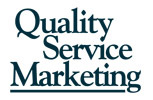“Too many organizations are thoughtless when it comes to volunteers.”
– Susan Ellis, president of Energize, Inc., a volunteer training & consulting firm.
Sadly, many former volunteers would agree with this statement. That’s why an intentional and proactive (rather than passive or reactive) effort is needed to effectively engage and retain volunteers.
Here are some guidelines to help you get started with intentional volunteer engagement and management.
- Focus at the Board Level
Volunteer expert Susan Ellis recommends volunteer involvement be a regular part of the board agenda so it can proactively focus on how to effectively recruit, engage, and maximize volunteer participation. “Don’t allow volunteer involvement to be the invisible personnel issue,” she says. She also suggests creating a board committee on volunteerism. - Learn who your volunteers are, their interest in your organization, and their volunteer expectations (as described in my previous post).
- Clarify and clearly communicate your organization’s expectations of volunteers and what they can expect from you. Here’s a great example: After meeting with a nonprofit organization’s leaders, I received a follow-up letter inviting me to serve on their advisory council. This invitation described council members’ responsibilities and stated what the organization promised them in return, including “Appreciation of your time and our commitment not to abuse your time or generosity.”
- Find ways to connect your volunteers to:
- your organization’s mission, strategic direction, and goals. (Note: You can even include volunteers in your strategic planning process.)
- your stakeholders (if applicable) to see your mission in action
- your other volunteers for mentoring and partnering
- your staff, particularly those with whom they’ll be working.
- Provide the mission-focused training and tools your volunteers need to best serve the organization; e.g., orientation, ongoing communication, recognition, etc.
- Proactively listen to your volunteers – obtain their feedback, ideas, concerns – and respond appropriately.
Volunteers require more than a simple “recruit ‘em and recognize ‘em” approach. Nonprofit leaders need to invest time and attention to engaging, managing, and retaining volunteer talent.
Stay tuned for my next post that will explore the challenge of engaging volunteers who are also brand partners.


 We incorporated awards to recognize people in key areas – Thought Leadership, Career Service, Professional Development, Innovation, and Special Incentives – all of which contribute to personal growth and corporate growth. Our program is peer-based, so anyone can recommend someone for doing great work or going the extra mile. It incorporates flexibility in that the rewards can be gift cards, W2 compensation/bonuses, or leave hours. Recognition of the individual is done as quickly as possible; in fact, that is a metric we track – how close to the action that deserved the recognition can we say “thanks” or “well done”. Where possible, we engage our client in the recognition, too, so that they see the company behind the employee who is providing that outstanding support. In addition, we announce awards in our monthly e-newsletter, which often includes photos and videos of the event.
We incorporated awards to recognize people in key areas – Thought Leadership, Career Service, Professional Development, Innovation, and Special Incentives – all of which contribute to personal growth and corporate growth. Our program is peer-based, so anyone can recommend someone for doing great work or going the extra mile. It incorporates flexibility in that the rewards can be gift cards, W2 compensation/bonuses, or leave hours. Recognition of the individual is done as quickly as possible; in fact, that is a metric we track – how close to the action that deserved the recognition can we say “thanks” or “well done”. Where possible, we engage our client in the recognition, too, so that they see the company behind the employee who is providing that outstanding support. In addition, we announce awards in our monthly e-newsletter, which often includes photos and videos of the event.

